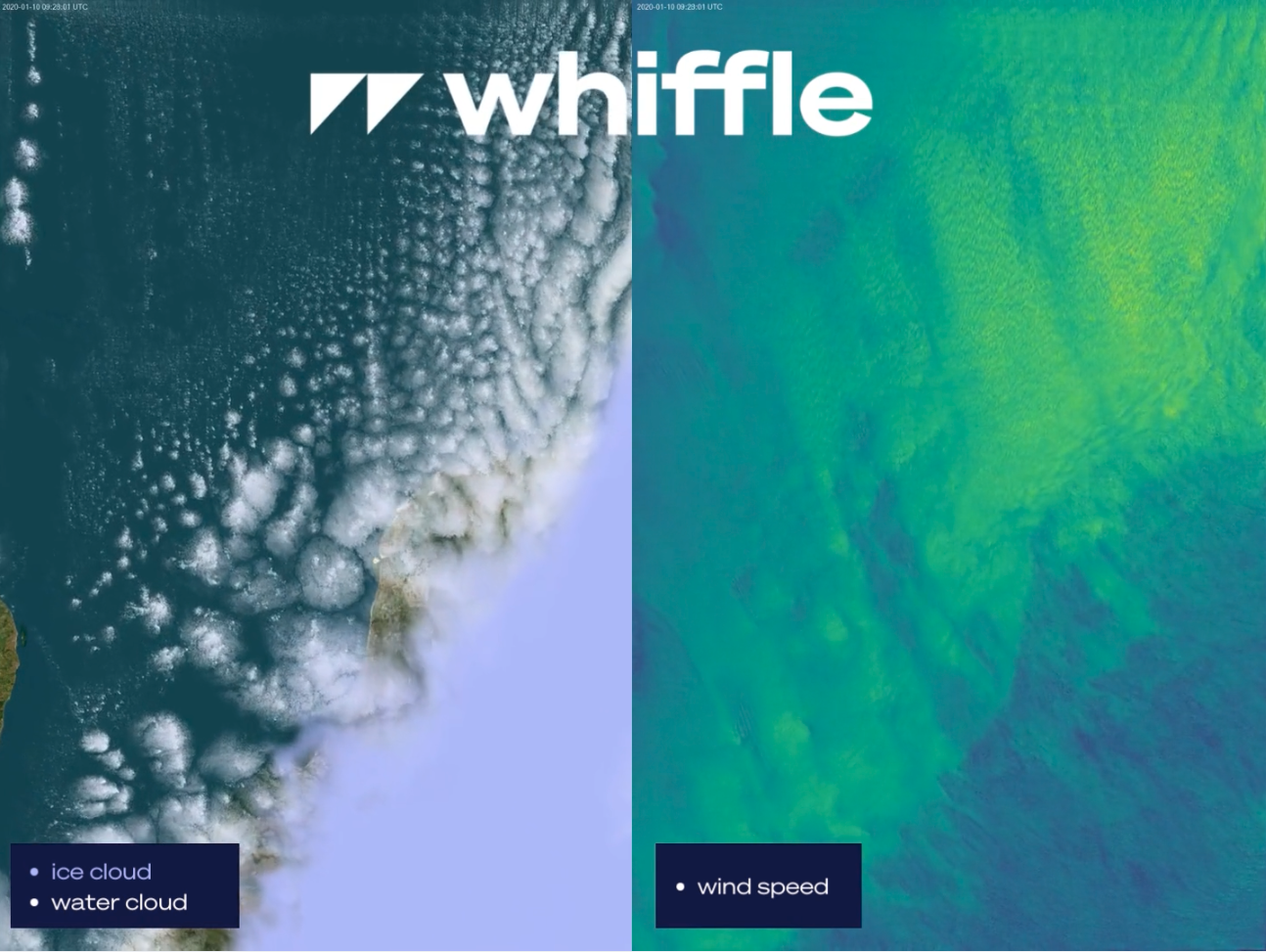Just over a week ago, Whiffle initiated one of the most extensive Giga Large-Eddy Simulations (LES) to date. This run is part of the WINS50 Project, an RVO-funded research project undertaken by Whiffle, KNMI and TU Delft, aimed at reducing the uncertainties around offshore wind energy’s large-scale deployment and its interactions with the atmosphere. This simulation is expected to be completed by the end of this year, and once complete, the datasets will be publicly shared. Whiffle anticipates findings that will significantly influence the wind energy sector and inform important policy decisions.
Here’s a first look at the simulation
Why is this an important milestone?
- The scale of innovation – For this run, we have developed a domain covering an immense area of 2560 x 3840 x 64, with a grid spacing of 128 meters. This giga simulation encompasses the Dutch part of the North Sea, extending to the adjacent UK and German waters
- A dual-scenario analysis – We are simulating two full years; one representing the present-day (2020) energy capacity and another projecting a 2050 offshore wind energy scenario. This dual-scenario analysis is crucial for understanding both current and potential future impacts of offshore wind energy.
- Harnessing multi-GPU, super-computing power – The simulation utilizes the power of multi-GPU supercomputing, specifically 8 x A100, 40GB GPUs on an Amazon Web Services (AWS) cloud cluster. This high-powered setup is integral to managing the vast amount of data and complex calculations required, ensuring both accuracy and efficiency in our simulation.
Whiffle’s role in WINS50
In the WINS50 project, Whiffle plays an important role in enhancing atmospheric modelling and simulation capabilities. As part of the consortium, Whiffle greatly extended the computational capabilities of the high-resolution, turbine-resolving weather model GRASP to enable simulation of
the entire Dutch North Sea. Whiffle’s contributions help in producing more accurate data and in-depth studies about wind farm impacts on the atmosphere, thereby significantly advancing the overall understanding of large-scale offshore wind energy deployment.
WINS50 objectives
- Provide the wind energy sector, policy makers, and the research community with the most up-to-date wind atlas up to 600m height that incorporates the impact of both existing and future (2050) wind farms.
- Develop a high-resolution (100m), turbine-resolving weather model for making operational forecasts and wind resource assessments for the entire Dutch North Sea.
- Increase the understanding of the impact of present and future North Sea wind farms on the atmosphere.
- Provide decision making support for policy makers and wind energy providers (e.g. by doing sensitivity studies with different power densities in offshore wind farms).
- Develop tools and provide datasets for additional integration studies such as for energy storage needs, electricity network planning and ecological studies
Stay tuned for progress updates
We’ll be sharing more information on our progress, challenges and breakthroughs experiences along the way – so bookmark our website and LinkedIn page, and stay updated. If you’re curious about learning how Whiffle’s cutting-edge LES technology can enhance your wind farm design and planning process, get in touch with us today.
